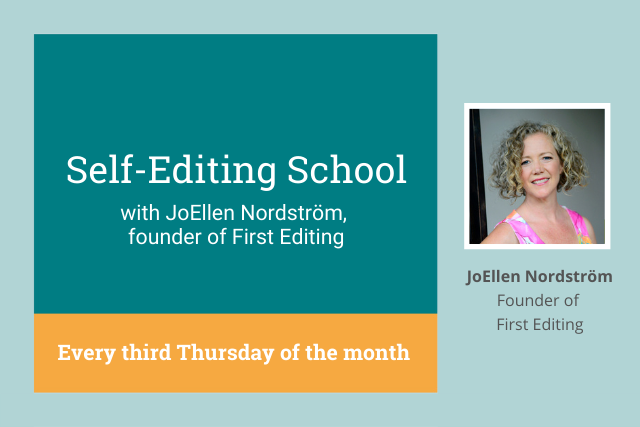Watch JoEllen's live training on Navigating the Four Stages of Book Editing, then keep reading for more tips:
Now, on to the article.
How to Navigate the Four Stages of Book Editing: A Professional Editor's Guide
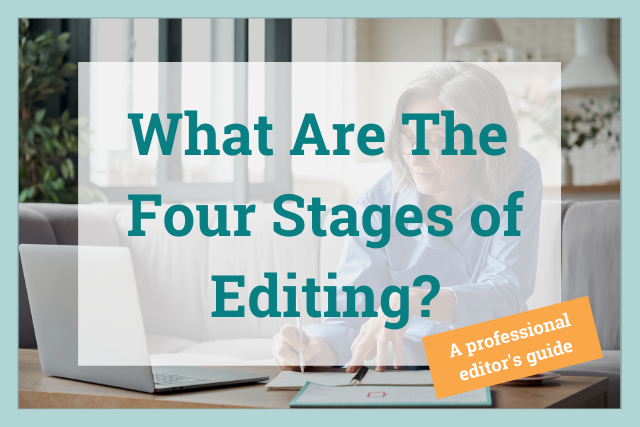
It takes a great number of aspects to bring about a well-written, engaging, and interesting manuscript. Aside from the actual writing, a key part of the creation process is your editing.
Why Is Editing Your Manuscript Important?
Editing is vital in the production of your book. It acts as the protective varnish that embellishes and perfects your writing before you share it publicly or publish it.
You should neither underrate nor take for granted the importance of editing. It enhances the overall feel of your manuscript. If you want a polished final piece that engages your reader’s mind and emotions, you need to edit rigorously.
Editing has four stages. Whether you’re a newbie still getting into your writing journey or a seasoned author with an established writing career, you must be familiar with these stages and ready to apply them in your editing process.
Editing is a little tricky in the beginning. However, in time, you’ll be able to hone your craft, improve your writing, become adept at self-editing, and succeed as an author in your field.
Let’s discuss the four stages of editing so you can plan accordingly.
What Are the Four Stages of Editing?
The four stages of book editing are:
- Structural Story Editing
- Line Editing
- Copyediting
- Proofreading
Structural Story Editing requires the broadest approach, with each stage narrowing its focus.
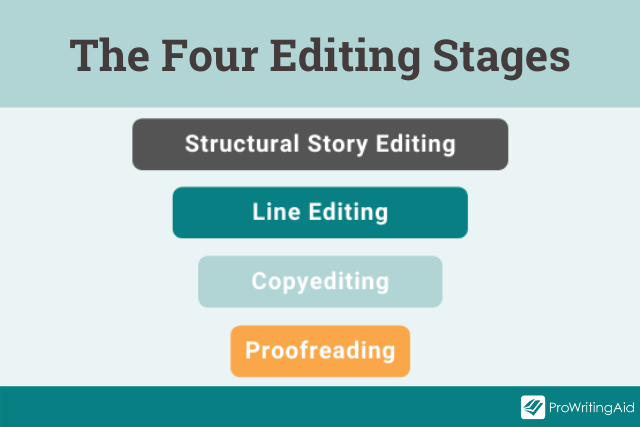
Let’s dive in.
1. Structural Story Editing
Structurally editing your story is the most in-depth of all stages of editing.
Also known as content, developmental, or substantive editing, structural story editing for fiction evaluates your story arc and presentation from the highest level.
Your story editor reviews in detail your entire manuscript and applies the most rigorous method of correcting your book.
Your best story editor is a certified expert who thoroughly evaluates the structure and presentation of your writing scene by scene. She evaluates your:
- Story arc
- Word count
- Characters
- Plot
- Settings
- Story flow and pacing
- Scene openings and endings
- Consistency and clarity
Story editing ensures you convey your characters, vision, empathy, and journey to readers. In short, it ensures you take your readers on a journey where they experience another world through the eyes of your protagonist.
Thus, it includes 38 story elements that certified, professional editors evaluate. These elements comprise your book, such as story, characters, plot, and settings.
By carefully reviewing each of these elements, your story editor objectively ensures they overlook nothing.
Can I Do Structural Editing Myself?
When self-editing, ensure you also review the essential 38 story elements. Present your story well, from start to finish, and make sure you portray your intent with clarity.
Evaluate and lay out the scenes in a logical and engaging manner in order to present your entire story. Ensure you set forth clearly the events, characters, and settings involved in each scene.
Story editing requires a comprehensive effort of reviewing your book. Doing it yourself is good practice, as you know your story very well.
However, for an exemplary result, you will need the services of a professional structural content editor after self-editing your story.
At First Editing, we hire only professionally trained and certified story editors who are experts in discovering the ins and outs of a story using a sophisticated, licensed editing software.
Such story editors relay the positive and negative points of your work in-depth using an objective approach. This allows you to make many vital organizational corrections during your initial revision.
More importantly, this thorough editing method creates the foundation for your story arc’s presentation and an impeccable presentation of your book.
2. Line Editing
After assessing your entire book, the next stage is to check the tone, style, and consistency of your writing. These three should go hand in hand. Tone sets the mood of the story while style is the way you tell your story.
While line editing, ensure that every sentence is working to develop your story’s intended mood. You do this by using words, descriptions, and tenses that enhance your writing.
A story with a happy and adventurous tone is more likely to use short, positive descriptions and sentences, while a story with a sad and unfortunate tone is likely to use negative descriptions in long sentences.
You may use plain and direct language or imagery in forming sentences. Whichever is your style, be sure it agrees with the mood.

You should also line-edit for consistency. Ensure your presentation remains consistent throughout the story and from paragraph to paragraph and sentence to sentence.
Professional line editors are experts in identifying the tone and style of your writing. They help you adapt your style and put forth the mood to your audience in the most effective way. They help pick out inconsistencies and suggest coherent lines more appropriate to your writing.
I always recommend using a different line editor from your story editor for a fresh perspective. Plus, line editing takes a unique set of skills, different from those used by story editors.
Working with a good line editor can help your reader hang on your every word.
3. Copyediting
Copyediting requires minimal review. It focuses on correcting grammar, spelling, and punctuation.
However, English evolves over time and dynamic guidelines in using the language keep evolving. Help from a professional copyeditor is important to make sure you’re using the correct conventions.
A professional copyeditor recognizes and fixes mistakes in spelling and punctuation, and is also well-acquainted with the rules of grammar.
When you’ve read your work repeatedly, it’s hard to notice issues with sentence structure, subject-verb agreement, syntax, etc. A professional copyeditor will make sure your grammar is up to scratch.
She applies these rules in conformity with the other elements evaluated in the previous stages of editing. She is the last person to make edits to the writing before formatting, proofreading, and publishing.
Copyeditors specialize in focusing on the grammar, spelling, and punctuation rules. If you engage a good copyeditor, you can feel confident that your readers won’t be finding typos after publication.
4. Proofreading
Proofreading is the ultimate stage of reviewing your edited book. It happens after formatting and before we finally send it to the printer. Proofreading involves fixing the final issues of the book layout resulting from the upload.
Your proofreader ensures your book has proper formatting to make it error-free and presentable to the reader.
A proofreader must be very thorough in reviewing the book to ensure its impeccability. Some aspects to consider in proofreading are paragraph spacing, indention, and choice of fonts and sizes.
Can I Proofread My Own Book?
You may do proofreading yourself, but it requires technical skills and ample time to finish. Unless you’re skilled enough, you may need the service of a professional proofreader to help you. Publishers often offer this. I highly recommend you hire a professional proofreader when self-publishing.
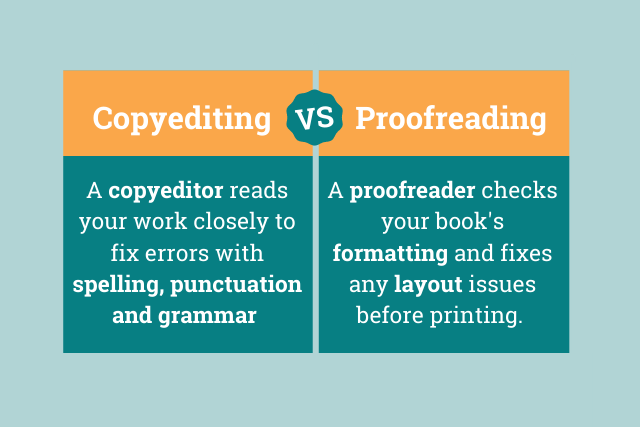
When Should I Hire an Editor?
These are the four stages of editing. Knowledge and skills in these editing levels improve your writing abilities and help you produce your ideal book. I encourage you to approach each phase separately during self-editing. Once you have completed that task, engage a professional editor who specializes in your specific editing level, genre, and subject.
Ensure your professional editor has proven experience in publishing and successful results within editing. Ask to see samples of their editing work along with evidence of their advanced certifications, education, and training. I also recommend that you request a free editing sample of your writing.
Ask for the aid of professional editors whenever you need. You’ll appreciate their work and be thankful for the professional results you can trust. Editing is a team effort between the writer and the editors. You will learn so much during each round of revisions.
Self-editing is an essential step in that learning process. Knowing the four levels of editing and what they entail allows you to better prepare for the editing journey.
By learning to self-edit, you can get the best return on investment from your professional editor.
By successfully preparing your manuscript in advance, your editor can focus on the more challenging structural aspects of the manuscript and you get the strongest story possible.
Take Control of Your Self-Editing
ProWritingAid’s editing software helps you structure your self-edit. Each element of your story is covered by a focussed report.
The 25 reports cover broad areas like readability, structure, style, and pacing as well as the details of your manuscript like dialogue tags, repeated words, sensory words, and sticky sentences.
You’ll find all of the statistics for your document as well as individual suggestions for specific mistakes all in one place:
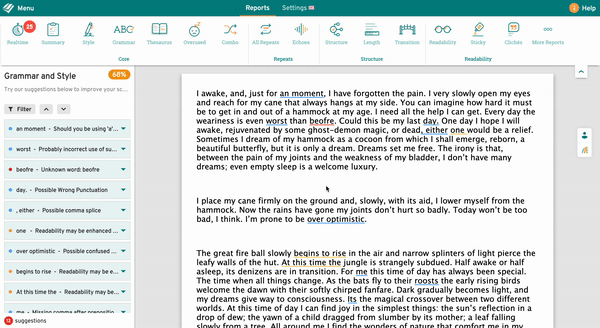
The Summary Report allows you to get an overview of your work so you can see where you need to focus to make the most improvement in the shortest amount of time.
ProWritingAid gives you the tools to track, implement, and take control of your self-editing.

